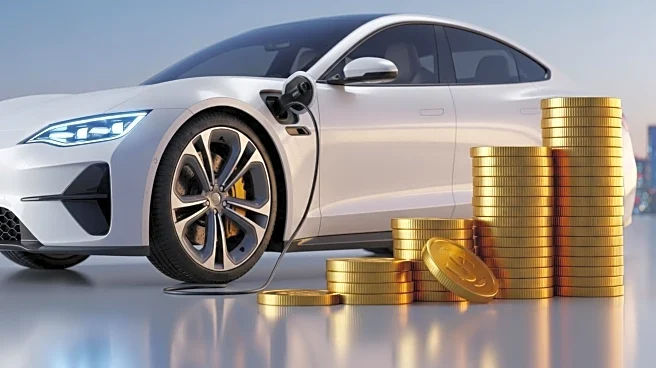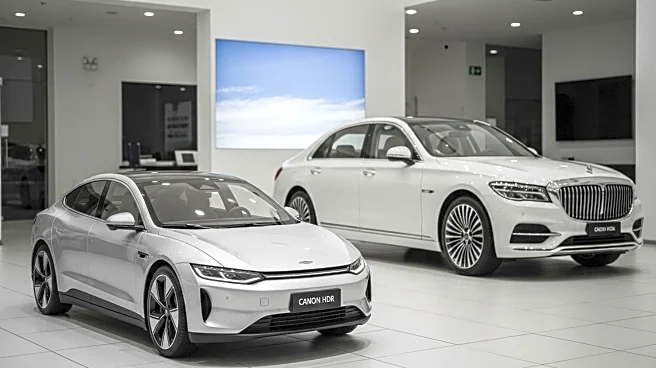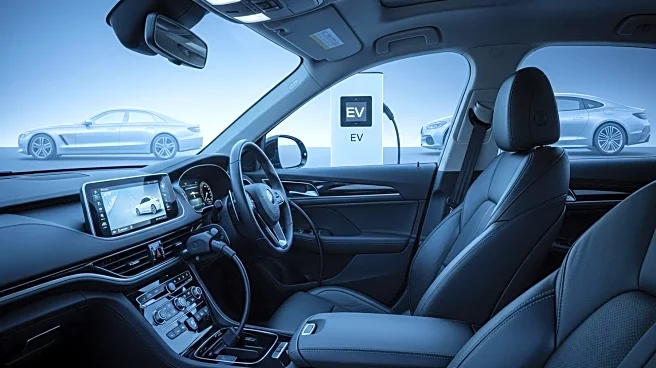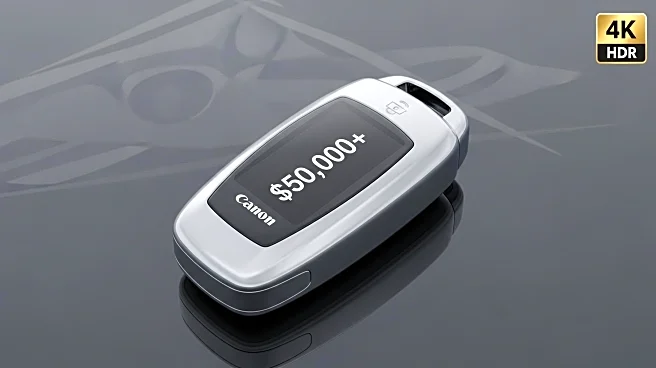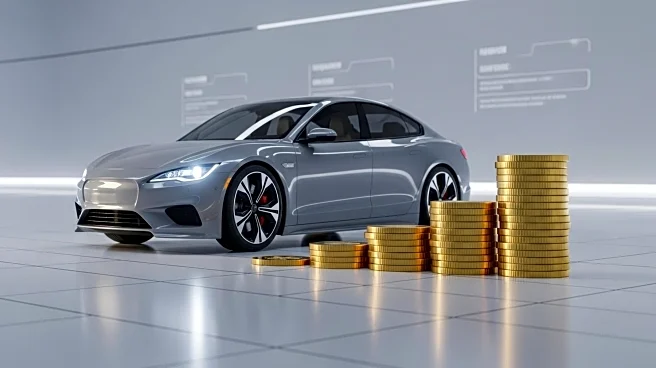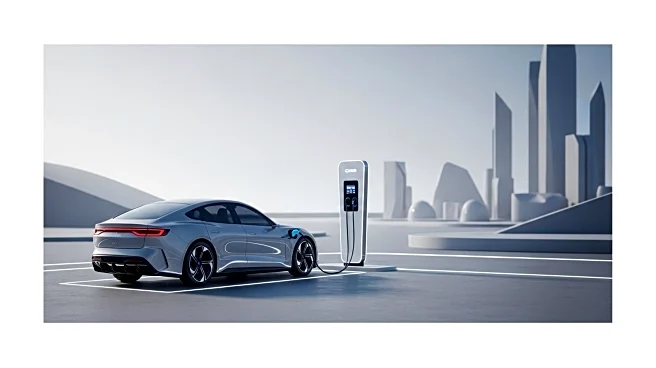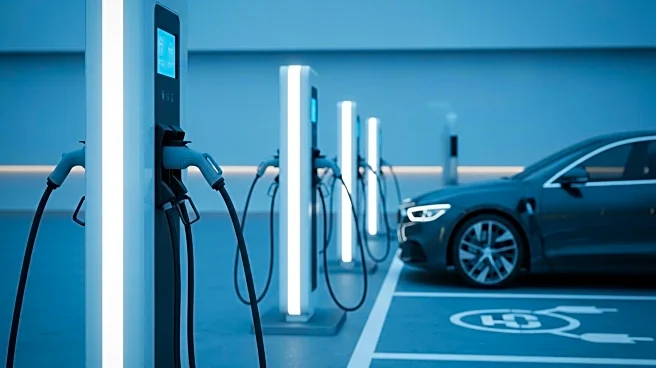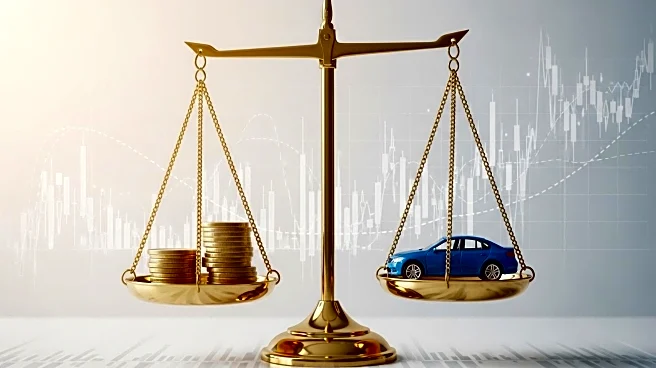What's Happening?
The average price of new cars in the United States has exceeded $50,000 for the first time, according to Kelley Blue Book (KBB). This milestone was reached in September, driven by increased sales of luxury models and electric vehicles (EVs). EVs accounted for 11.6% of all new vehicle sales during the month, marking a record high. The average price for an EV was $58,124, reflecting a 3.5% increase from August. In the third quarter, EV sales reached 437,487 units, capturing a 10.5% market share, which is a 30% increase compared to the same period last year. The expiration of government-backed EV incentives at the end of September prompted many buyers to finalize their purchases.
Why It's Important?
The rise in average new car prices highlights significant shifts in consumer preferences and market dynamics. The growing popularity of EVs, despite their higher price point, indicates a strong consumer interest in sustainable transportation options. This trend is further supported by government incentives, although these are set to expire, potentially affecting future sales. The increase in luxury vehicle sales also suggests a robust demand for high-end models, which could impact the affordability of new cars for average consumers. As prices continue to rise, more price-sensitive buyers may turn to the used car market, altering the landscape of vehicle sales in the U.S.
What's Next?
With the introduction of new standard versions of Tesla's Model 3 and Model Y, average prices in the EV segment are expected to decrease in the coming months. This could make EVs more accessible to a broader range of consumers. Additionally, the automotive market may experience further disruption as manufacturers adjust to changing consumer demands and economic pressures, including tariffs and inflation. Industry analysts anticipate continued evolution in the market, potentially leading to more competitive pricing and innovative offerings.
Beyond the Headlines
The shift towards higher-priced vehicles, particularly EVs, raises questions about the long-term sustainability of consumer spending in the automotive sector. As the market adapts to these changes, manufacturers may need to balance innovation with affordability to maintain growth. The environmental impact of increased EV adoption is another critical consideration, as it could contribute to reduced emissions and a shift towards cleaner energy sources.
